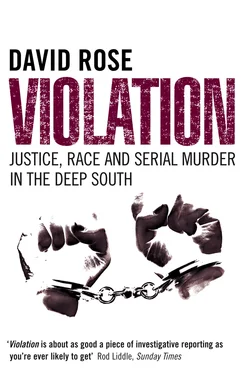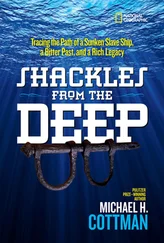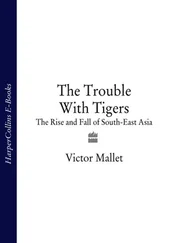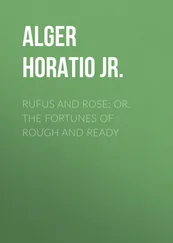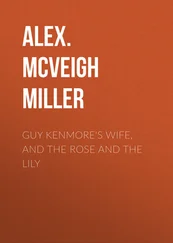Driven to desperation, Mayor Mickle tried to reduce the chances of another murder by cancelling Halloween. Parents, he told reporters, should ensure their children were home by 6 p.m. on 31 October. Trick or treating was forbidden.
With the police investigation and the reputation of his department in disarray, Chief McClung continued to claim that Jerome Livas might still have killed the first two victims. ‘The evidence against him still exists,’ he told reporters. I met the Ledger’s former crime correspondent Carl Cannon in a cellar bar in Washington DC, where his career has prospered as the White House correspondent for the National Journal. Warm and approachable, he vividly recalled the events of his reporting youth twenty-five years earlier. His father had been a big-time Washington reporter before him, and unlike most Columbus journalists, he always knew he was only passing through, and could afford to make enemies.
‘They were still using that hoary old line – Livas had said things that only the killer could have known – and when Mrs Scheible was killed, they added another: that there had to be a copy-cat killer. I’d already had some experience with the Columbus cops and their tendency to rush to judgement. But I had a source in the department who used to call me at home. He told me it was bullshit: the murders were the work of the same guy. He said Livas had this urge to please. He’d confess to anything.’
Cannon managed to enlist the help of a judge to get him access to Livas in jail. Left alone with Cannon, Livas signed another statement within a couple of hours. This time, he not only confessed again to the first two Columbus stranglings, but admitted that it had been he who had assassinated two Presidents, John F. Kennedy and William McKinley; that he had been with Charles Manson the night his followers murdered the actress Sharon Tate; that he had known when Charles Lindbergh’s baby was going to be kidnapped in the 1930s; and that he knew Elizabeth Short, the victim of the notorious ‘black dahlia’ murder in Cannon’s home state of California the following decade. Cannon asked him if knew what the word ‘suspect’ meant. Livas replied: ‘That means you’re trespassing on private property or something.’ The one crime he vehemently denied was the only one for which he was to be convicted – the murder of his girlfriend, Beatrice Brier.
Twenty-three years old, Cannon had the scoop of his career thus far. After staying up all night transcribing his notes and tapes, he had his story ready to run for the evening edition of 17 November 1977. Shortly before his deadline, he called on Chief McClung. Cannon recalled: ‘He got up, walked to the window, looked out. He said, “You know, Carl, I’ve got a lot of people here but no one doing public affairs to get our stories out to the public, not like the Army has.” He asked me what I earned, and suggested he might be able to double it. I told him: “I tell you what, Chief. This story’s going to come out in two hours, and everyone’s going to know that this guy didn’t do it. But I’m not, on this occasion, going to tell the readers about our conversation.”’
Meanwhile, Columbus’s maniac remained on the loose.
And the Negro. Do not forget the Negro. So far as I and my people are concerned the South is Fascist now and always has been … The history of my people will be commensurate with the interminable history of the Jew – only bloodier and more violent.
Benedict Mady Copeland in CARSON McCULLERS,
The Heart is a Lonely Hunter (1940) *
At his hilltop home at the upscale end of south Columbus, Gene Hewell was tending his garden. Now sixty-five, he moved smoothly, wielding his hoe without apparent effort, his only concession to the heat and humidity a straw boater. I was sweating the moment I got out of my car, but his breathing was rhythmic, his skin dry. In the distance, the towers used for parachute training at Fort Benning seemed to shimmer above the trees. Gene gestured towards the west. ‘That’s where my great-grandmother worked as a slave,’ he said. ‘On a plantation at a place called Oswichee, in Russell County, Alabama. It was owned by the first W.C. Bradley’s father.’
Gene, the brother of the singer Jo-Jo Benson, owned a men’s fashion store on Broadway, the Movin’ Man – the first, and for many years the only, black-owned business on the street. Inside his house, in the welcome cool of his living room, Gene eased himself into a sofa beside an impressive collection of guitars. Like his brother, he had lived in Columbus or Phenix City for most of his life, and his family had been in the district for much longer than that.
‘My great-grandmother told my grandma about the day they freed the slaves, and she told me and Jo-Jo,’ Gene said. ‘She said that she was out in the fields, chopping cotton – chopping at the stalks to let the plants get more nutrients. Then she heard this noise. A crackling, was how she explained it. She looked up at the ridge above the field where she was working and all she could see was a blue line of white people, running by the master’s house. Some of the people there were trying to shoot at them, and they were trying to get in. She said she’d never seen so many whites killing so many whites.’
Afterwards, with the plantation secure, the Union soldiers called the slaves from the fields in order to tell them that Lincoln had set them free. Addressing a hushed semi-circle of African-Americans in the shade of a tree, an officer read the Emancipation proclamation. As he did so, Gene said, one of his men idly bounced his rifle on the toe of his boot. ‘The gun went off and clean shot off his toe. My great-grandmother pulled his boot off and dressed the wound. Then he pulled it right back on.’
When the federal army left later that afternoon, some of the former slaves followed it, because they were scared of reprisals from whites. According to the oral history handed down among the Chattahoochee Valley’s African-Americans, their fears were justified.
‘My grandma told us that the day after the Yankees left, all down through the woods near the plantations, there were black people nailed to trees,’ Gene said. ‘They were dead, like butchered animals. Instead of being set free, they were killed.’
In the National Archives in Washington DC, in the Georgia section’s records of the federal agency set up to assist the former slaves, the Bureau of Refugees, Freedmen and Abandoned Lands, I found a ledger, compiled regularly from information sent from every county to the state headquarters. Entitled Reports Relating to Murders and Outrages , its pages document what can only be described as the beginning of Georgia’s white terror.
Written in the elegant copperplate of the Victorian bureaucrat, the ledger sets out its accounts of ethnic assault and homicide under logical headings. There are columns for the ‘name of person assaulted or killed’; whether they were white or coloured; the ‘name or person killing or assaulting’, together with their race; whether anything was done to bring the perpetrators to justice; and any further ‘remarks’. In Columbus’s Muscogee County, and the five surrounding counties that today comprise the Chattahoochee judicial circuit, I counted the names of thirty-two victims attacked, most of them fatally, between March 1866 and November 1868. All but one were black. All the named perpetrators were white.
Even before the Civil War, writes W.J. Cash, the law and its institutions were weaker in the South, where slave-owners had displayed ‘an intense distrust of, and, indeed, downright aversion to, any actual authority beyond the barest minimum essential to the existence of the social organism’. In the turmoil of the Reconstruction era after the war’s end, these traditions found expression in a new wave of extralegal violence. ‘At the root of the post-war bloodshed was the refusal of most whites to accept the emancipated slaves’ quest for economic and political power,’ writes W. Fitzhugh Brundage, the historian of lynching in Georgia and Virginia. ‘Freed from the restraints of planter domination, the black man seemed to pose a new and greater threat to whites. During a period when blacks seemed to mock the social order and commonly understood rules of conduct, whites turned to violence to restore their supremacy.’
Читать дальше
